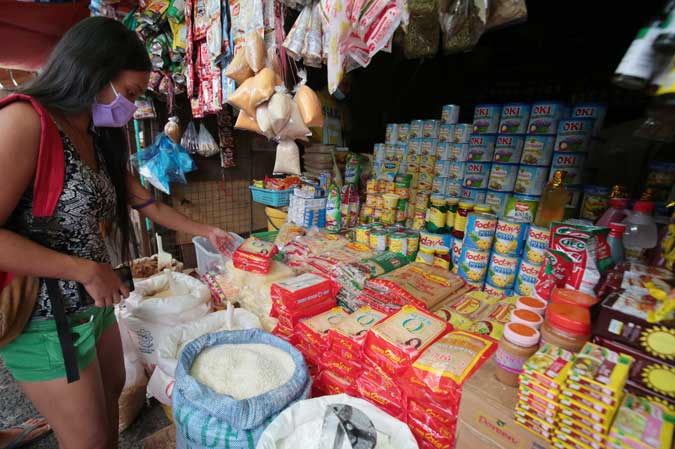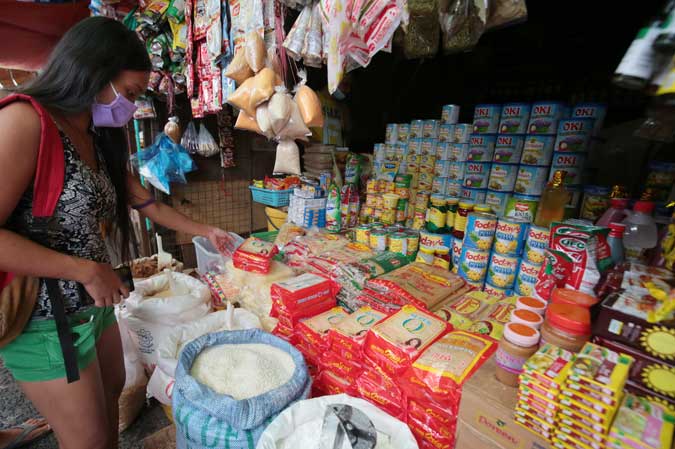
By Luz Wendy T. Noble, Reporter
THE CENTRAL BANK is likely to keep its key policy rates at the record low levels on Thursday, as it considers the recent uptick in the country’s inflation rate, according to analysts.
With recovery prospects remaining bleak in the fourth quarter, analysts expect the Bangko Sentral ng Pilipinas (BSP) to resume policy rate cuts as early as the first quarter of 2021 to boost a sagging economy.
A BusinessWorld poll last week showed all 15 analysts do not expect the Monetary Board to go for another rate cut at its seventh and final policy meeting for the year on Dec. 17.
“We expect BSP to leave its policy rate unchanged at 2%, as a weather-related rise in food prices led to a higher-than-expected pickup in inflation in November,” Nomura Holdings, Inc. Chief ASEAN Economist Euben Paracuelles said.
Philippine National Bank Head of Research Alvin Joseph A. Arogo said the BSP would likely keep rates untouched to allow time for the last rate cut in November to work its way through the economy.
“Moreover, the real reverse repurchase rate is now at a deeper level of -1.30%, which is one of the lowest in Asia,” he said.
This was justified by the 11.5% contraction in economic output in the third quarter, which was one of the worst in the region, he added.
Inflation in November quickened to 3.3% from 2.5% in October, the second month of a faster rise in the consumer price index. This also means real interest rate is now in negative territory as the RRP had been slashed to 2% by mid-November.
The BSP unexpectedly slashed rates by 25 basis points (bps) last month, citing the need to provide support amid continued uncertainty caused by new virus cases globally and the impact of a recent string of typhoons.
The central bank has lowered policy rates by 200 bps this year. The overnight lending and deposit facilities stand at 2.5% and 1.5%, respectively.
“A 200 bps easing in policy rate has not been able to arrest the slide in credit growth this year,” said ANZ Research Economist Khanika Batnagar, who expects the central bank to leave rates unchanged on Thursday.
Latest BSP data showed lending growth was at 1.9% year on year in October, easing further from 2.6% in September and the slowest since 1.9% in September 2006. Banks have been imposing stringent credit standards to guard against bad loans amid the economic slowdown.
Analysts, however, believe the pause will be momentary, taking cues from dovish signals from officials.
“It is suspected that the BSP will patiently wait for the fourth-quarter GDP growth rate release in February, at the same time, monitoring more forward-looking economic indicators to better ascertain the shape of the economic recovery,” UnionBank of the Philippines, Inc. Chief Economist Ruben Carlo O. Asuncion said, noting the surprise cut followed the release of the third-quarter GDP data in early November.
The central bank will also keep a close eye on fiscal policy, analysts said.
“As [BSP] Governor Diokno has implied, he would like to see fiscal policy do its part in stimulating the economy, but that can come only in 2021,” University of Asia and the Pacific Economist Victor A. Abola said. “I think they will be on hold until they see inflation go back to below 2.5%,” he added.
Data from the International Monetary Fund, which keeps track of policy measures meant for the pandemic response, show fiscal packages in the Philippines are equivalent to 3.9% of the GDP. This is lower than fiscal policies of neighbors such as Thailand (at least 9.6% of GDP), Indonesia (4.4%), and Malaysia (4.9%).
“Even as BSP is prepared to implement additional policy measures, fiscal policy should play a more significant role in helping restore market confidence,” Mr. Diokno said earlier this month.
The P4.5-trillion national budget for 2021 is 9.7% higher than this year’s spending plan.
President Rodrigo R. Duterte is expected to sign it into law by yearend.
In an “extreme scenario” where fiscal measures continue to lag, the BSP may be pressured to trim rates once more by mid-2021, said ING Bank N.V. Manila Senior Economist Nicholas Antonio T. Mapa.
“BSP will likely still be mindful of financial system stability as well as price stability, but with the economy mired deep in recession, [Mr.] Diokno will continue to have an eye on helping out where he can in terms of monetary support,” he added.

